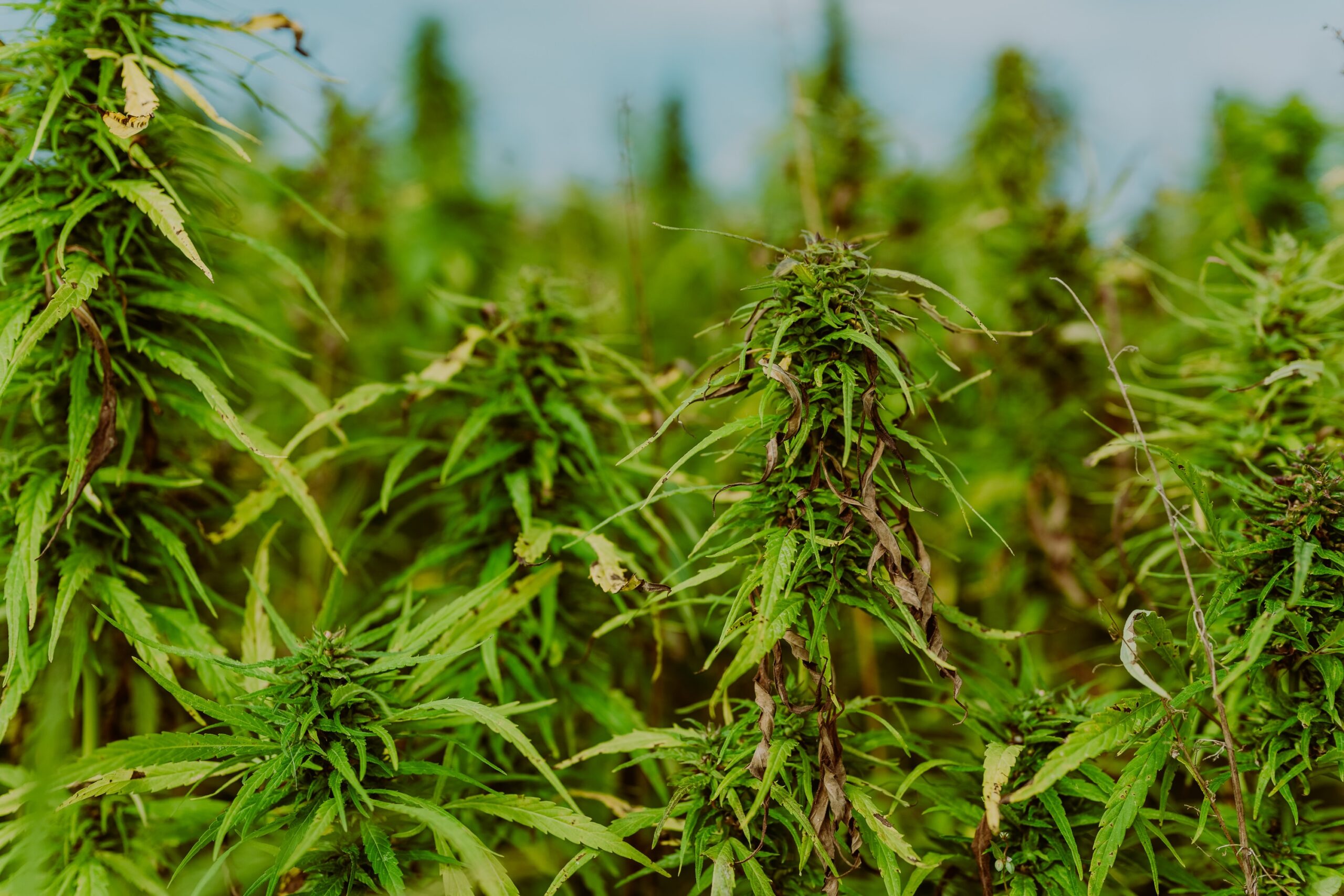
In just its third year of hemp farming, South Dakota has become the second-largest hemp producer in the United States, after only neighboring Montana. It has done so in the midst of a tough market that’s seen hemp production contract across much of the country. In this article, we provide data on South Dakota hemp production and wholesale prices. An industry insider in the state also provides key insight into how and why hemp is on the rise in the northern plains.
South Dakota Hemp by the Numbers
South Dakota’s Industrial Hemp Program was launched in 2021, the first year the recently-legalized crop was allowed to be grown in the state. The state saw relatively sizable hemp production straight away, with data from the U.S. Department of Agriculture Farm Service Agency (USDA FSA) showing almost 1,850 acres planted in 2021, good for the seventh-highest total in the country that year.
South Dakota’s 2021 hemp crop was heavy on grain varieties, but the production targets have shifted as hemp farming in the state has grown over the years. A breakdown of USDA FSA data for South Dakota is as follows:
2021 Crop Year
- 1,843 total acres planted with hemp
- 165 acres planted for CBD / cannabinoids
- 146 acres planted for fiber
- 1,533 acres planted for grain / seed
2022 Crop Year
- 2,540 total acres planted with hemp
- 4 acres planted for CBD / cannabinoids
- 395 acres planted for fiber
- 2,141 acres planted for grain / seed
2023 Crop Year
- 3,127 total acres planted with hemp
- 3 acres planted for CBD / cannabinoids
- 1,971 acres planted for fiber
- 1,153 acres planted for grain / seed
According to USDA FSA data, South Dakota was the largest producer of grain hemp in the U.S. in 2022. However, 2023 saw a shift to fiber varieties making up the majority of the hemp acreage planted in the state.
Advocacy Campaign and Local Processing Facilities Draw Farmers to Fiber
“The season has been really good,” Derrick Dohmann, Vice President of the South Dakota Industrial Hemp Association (SDIHA), told Hemp Benchmarks in a recent interview. He’s also the sales and marketing manager at Horizon Hemp Seeds.
Dohmann said the expansion of hemp cultivation in his state is due in part to a SDIHA advocacy campaign to South Dakota farmers. “This is the third year we’ve held grower meetings all around the state,” he said. “Close to 30 grower meetings … providing potential growers with information, A to Z.”
Dohmann also explained the 2023 shift to fiber by many of the state’s hemp farmers. “This year was a huge flip from dual purpose to straight fiber varieties,” he pointed out. “The reason behind that is we have two processors with decortication facilities in the state.” Those facilities, he noted, have bought nearly all the hemp fiber bales in the state for the past two years for use in insulation, construction, animal bedding, and other products. “Almost everyone who planted this year is under contract, if they choose,” Dohmann said.
Strong Wholesale Industrial Hemp Prices Entice Farmers
Dohmann said another major factor attracting South Dakota farmers to hemp has been “the revenue you can make per acre.” Last year, he noted, prices were anywhere from $210 to $230 per ton. “With fiber prices that we have in the state this year, everyone’s contracted at $300 a ton,” he said. “That’s what these facilities are paying this year. When you start talking four to five ton yields per acre, that really increases everyone’s attention level.”
In terms of contract prices for grain, Dohmann said it’s currently anywhere from $0.55 to $0.65 per pound for conventional hemp grain. Organic grain, which he said doesn’t seem to have the same yields, is paying about double the conventional grain price, at around $1.10 to $1.30 per pound. Based on prior reporting, prices for hemp grain have risen somewhat compared to three years ago.
What’s Changed and What’s Ahead for South Dakota Hemp
In comparison to the “Green Rush” days following hemp’s legalization in 2018, Dohmann said there’s a lot more focus now on getting the science of hemp correct, particularly the proper genetics needed. His company provides certified hemp seed for growers. “One of things we like to drive home is you need to be planting certified seed, [that’s] a proven genetic,” he said.
He also noted that the previous cultural stigma surrounding hemp and cannabis is fading fast. “We would go to different trade shows or farm shows, and people would laugh as they walked by,” he remembered. “Now we’re getting more [agriculture] questions; what’s your population per acre, what’s the potential return for stocks. There were some reluctant growers, but now a lot more people come forward and reach out to us, asking how they can start growing this crop.”
Dohmann believes a major issue holding back the development of a mature hemp market in South Dakota is the amount of acreage needed to support larger-scale hemp product manufacturing. “We would need to get above 10,000 acres to start getting some real attraction,” he said. “Some of these end markets need tremendous sized acres. So if we can keep increasing those acres year after year, it’s going to draw [manufacturers] to come into the state and put up one of their facilities. And then we’d have [a supply chain] from seed to final product, all done in the state.”
Related Articles:
- September 2023 Hemp Spot Price Index Report (September 27, 2023)
- Where Does the Hemp Fiber Sector Stand in 2023? (June 14, 2023)
- The View from the Top: Officials in Major Hemp Producing States Provide Perspective on the Industry (May 17, 2023)


